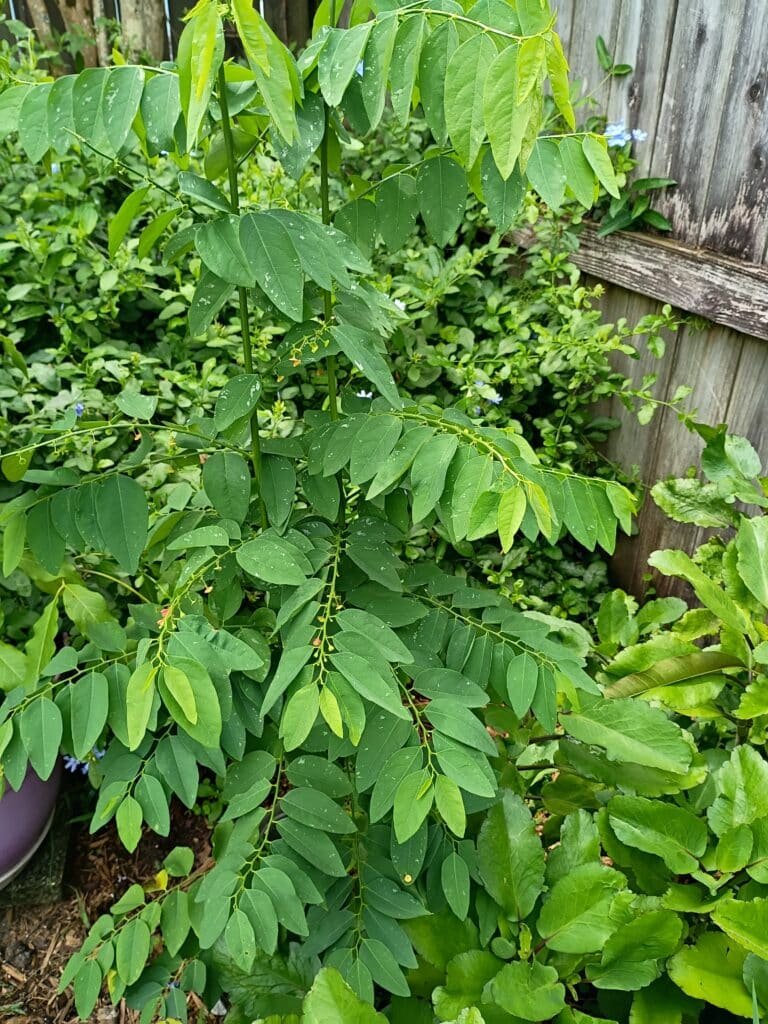Did you know there are edible plants that thrive in the heat and are super easy to propagate?
I live in Central Florida, where our summers can reach into the triple digits. As far as “gardening” goes, our typical crop growing season is very different from cooler climate areas. Once we enter into July, humidity, heat and direct sun become a problem. But, over the years I’ve discovered several edible plants to grow that actually thrive in warmer and hot climates.
And I don’t know about you, but I’m all about plants that take care of themselves. The varieties I list in this post are not heat tolerant plants, but also drought tolerant and thrive in poor soil.
In addition, these edible plants are all perennials or tender perennials – meaning they come back after winter (though they may go dormant) and can live longer than two years. Another bonus is they are incredibly easy to replicate (propagate) by seed or cutting – this means you can multiply and create new plants.
Oh, right, here’s the best part (and major selling point): they’re completely edible and delicious!
7 Edible perennials to grow in hot climates
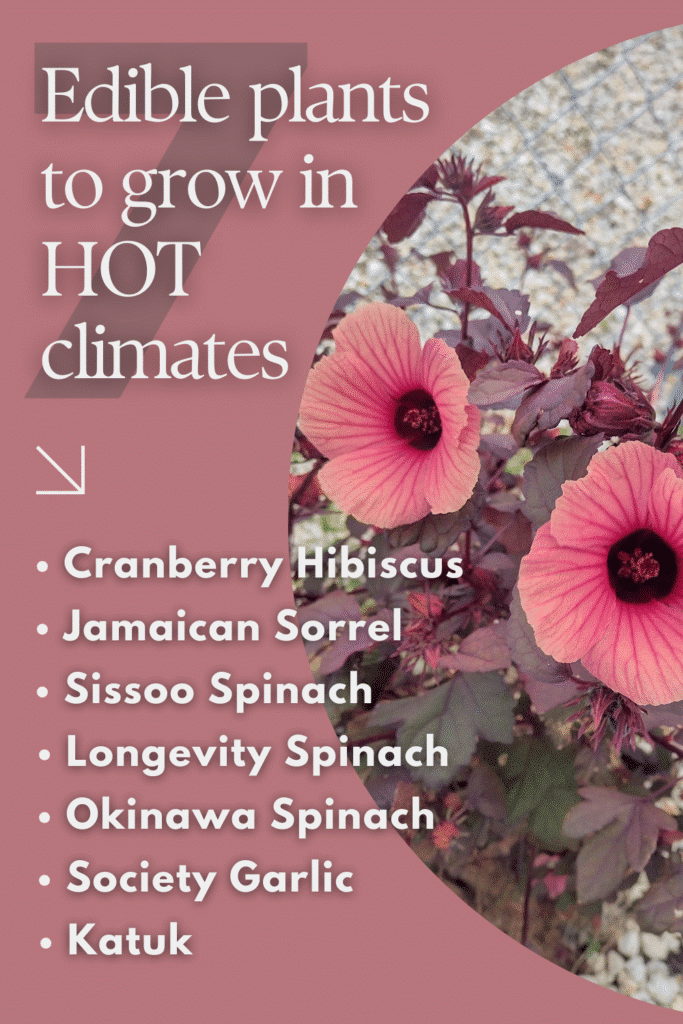
Cranberry Hibiscus
Noted for their beautiful and vibrant magenta-colored leaves and soft pink contrasting flowers, the Cranberry Hibiscus is a staple plant to have in your yard even if you don’t plan to consume it!
Particularly, the leaves are the edible part of this plant, though you can also enjoy the flowers. As in the name, yes, the leaves do have a twang, cranberry flavor, and are the perfect addition to salads. The younger leaves are especially tender and flavorful as well.
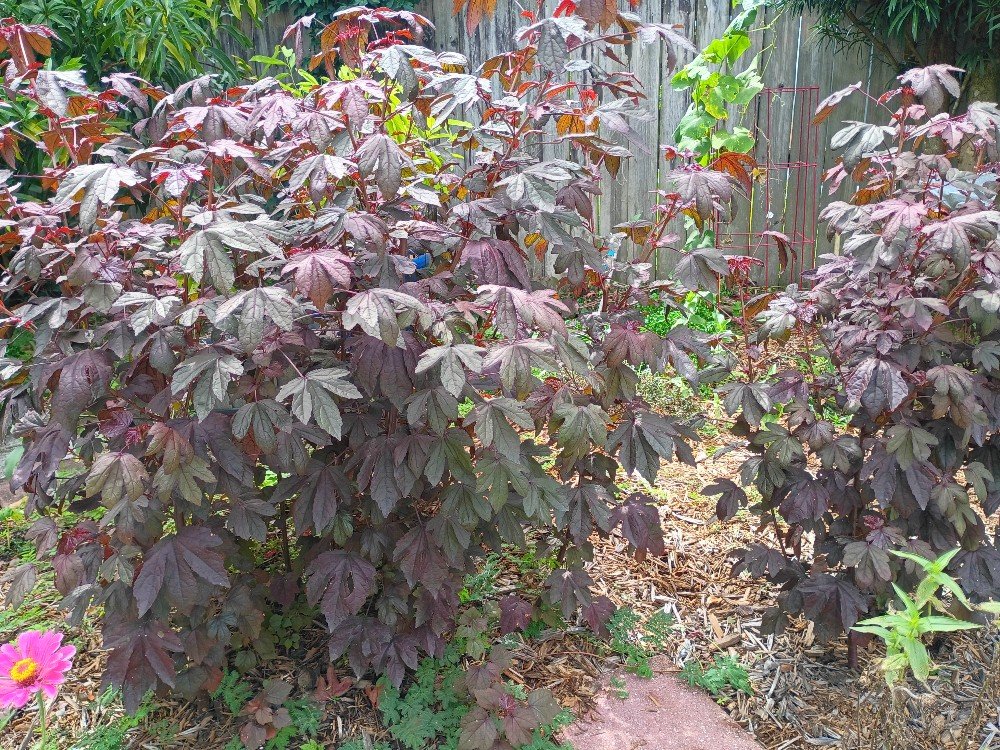
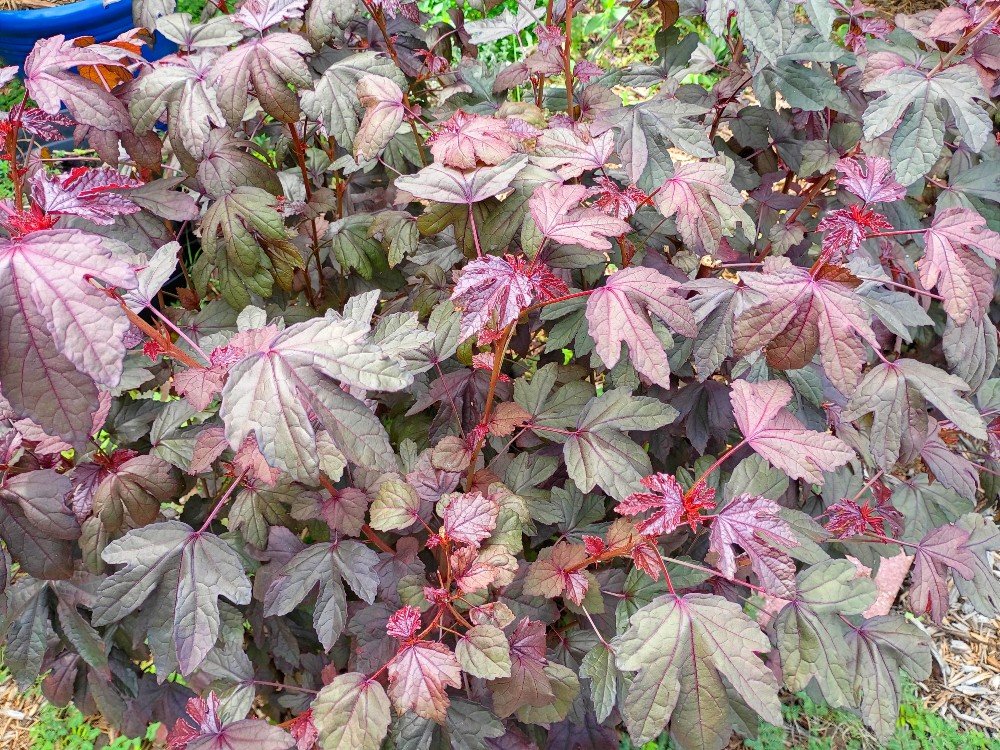
Hibiscus plants are well known and established in warmer climates, like this one, and do especially well in poor, sandy soil. Once established, they require very minimal care and will do a superb job on their own coming back year after year if you allow the flowers to go to seed. Every single year, plenty of little seedlings pop up in my yard at the start of summer.
Cranberry hibiscus, while it is technically propagatable by cutting, the plant quality is not as optimal as growing from seed. I found that propagating this hibiscus from a cutting lead to much smaller leaves, minimal flowers, and staggering growth compared to growing from seed.
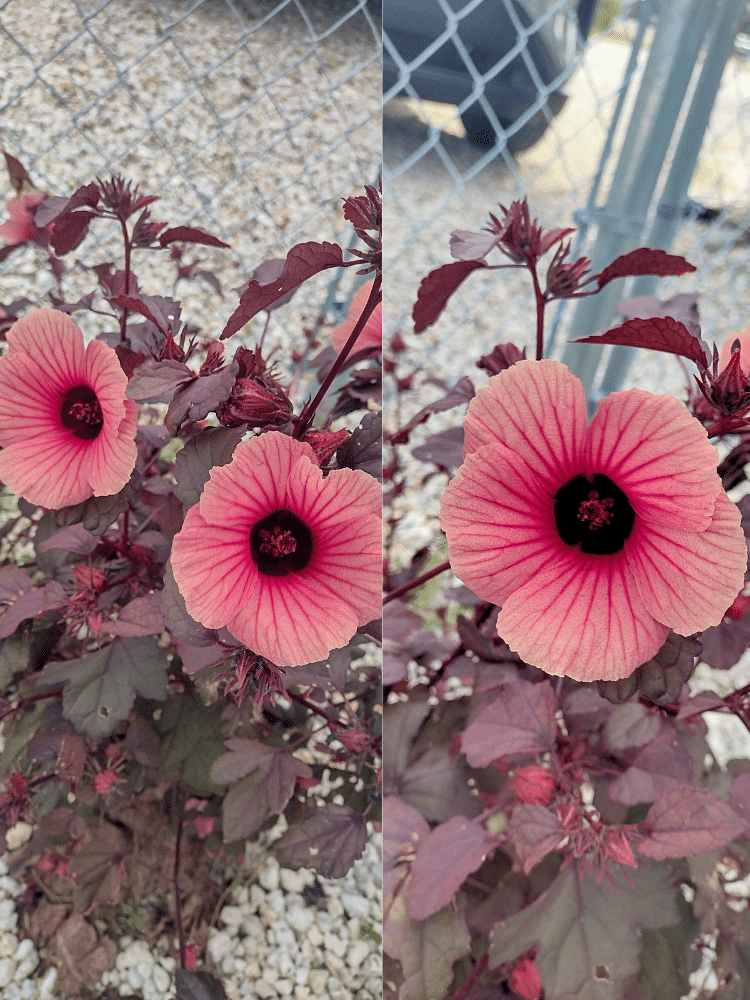
Society Garlic
Want a garlic replacement? No, for real, because this is it. Actually, it’s a slight mixture between garlic and green onion for me but I love it anyhow, especially when I don’t have garlic on hand.
While this plant might be considered more of an herb, it’s still edible, useful and delicious. I’ve even pureed the long, grass-like leaves to make pesto or finely chopped to make garnish for salads, stir fry and soups.
Bonus – it will shoot out these adorable long-stem lilac flowers, that are also edible! In fact, the flowers, IMO, are 10x as potent as the leaves, so be careful.
Society garlic is another heat-loving, drought tolerant hedge or shrub to have in your herb garden or yard. And, even better, is you don’t actually smell the garlic unless you’re actually clipping and using the foliage – so don’t worry if you think a garlic stench is going to take over. Though, if so, it might help take care of certain pests.
Longevity Spinach
I’ve really enjoyed Longevity Spinach as a typical spinach replacement, and I know many would jump for joy over this, too, who use spinach in their daily smoothies. While the taste isn’t exactly like the spinach you get from the store, I find its superior and robust. I use the leaves fresh raw in salads or cook them down in soups, dips and when I’m making lasagna.
And, let me tell you, this crawling bush-type plant aims to please, seriously. It may go through pest and disease struggles from time to time (from too much humidity and rain) but it strives to thrive in warm and hot climates. Yes, I am forewarning that this plant can be prone to leaf spot diseases in wetter climates and is known for going dormant in the winter. *I’ve lost a few due to random hard freezes overnight, but you can salvage this by covering your plants or having small, propagated plants on hand to plant in the spring.
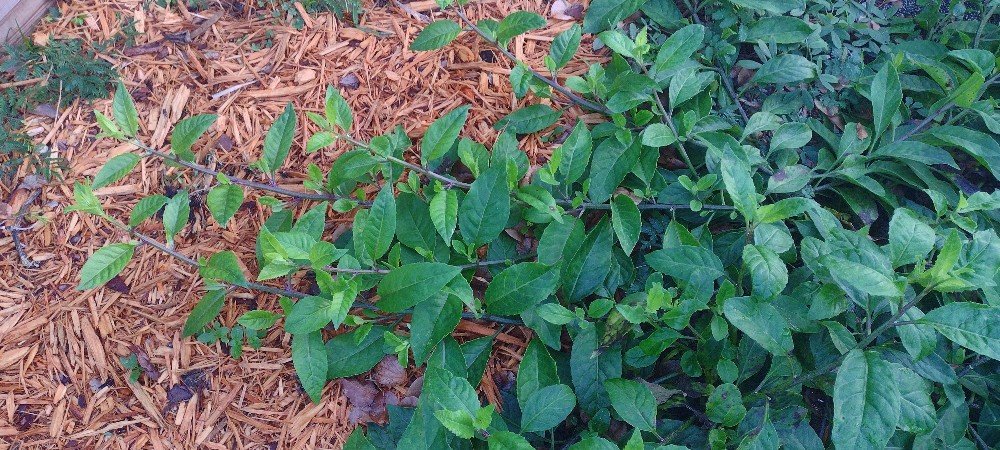
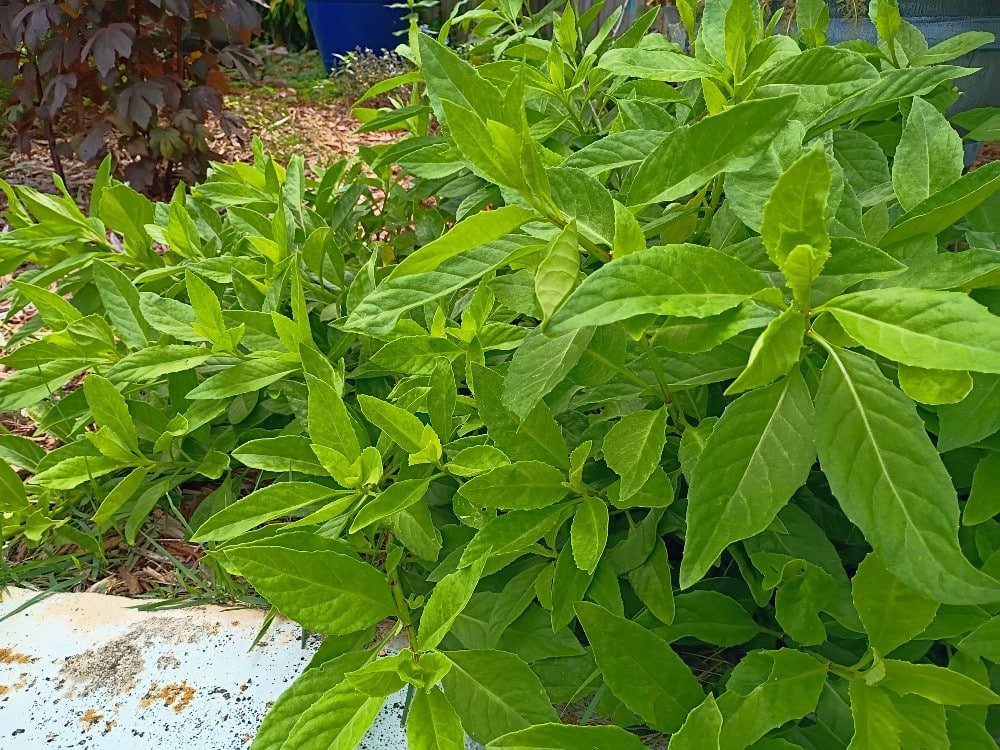
BUT, this guy loves the sun and heat and is impeccably drought tolerant. It really is a set it and forget it plant. Though if you have shadier, canopy or dapple areas of sun, this spinach will do just fine there, too.
The best part? This plant is SO easy to propagate from cutting and could care less how awful your soil is. This plant is true to its name, longevity, because I’ve kept this plant going from a single cutting for well over 5 years now.
Okinawa Spinach
Such a cool name, right? Similar to the Longevity Spinach, Okinawa Spinach is slightly different in looks and taste. The foliage grows similarly, in that is prefers to crawl and thrives in the heat of my Florida summers, but Okinawa is unique in the way that it has a beautiful purple color on the underside of its leaves.
Taste wise, not my fave, at least raw. Personally, it has a strange after taste, like seafood, but don’t let my opinion spoil having it in your garden. When the leaves are cooked, however, the spinach tastes just fine!
I will say, as much as I strive to keep this plant going, it’s more finicky than the Longevity and prone to disease in wetter climates. I found that when I planted this guy in a pot of rocks in part shade in my South Florida home away from home versus Central Florida, it did much better. Not sure if it’s the airflow, salty air or slightly cooler temperatures of around 85 versus muggy, humid 95+ in Central Florida, but it thrives the more south its grown.
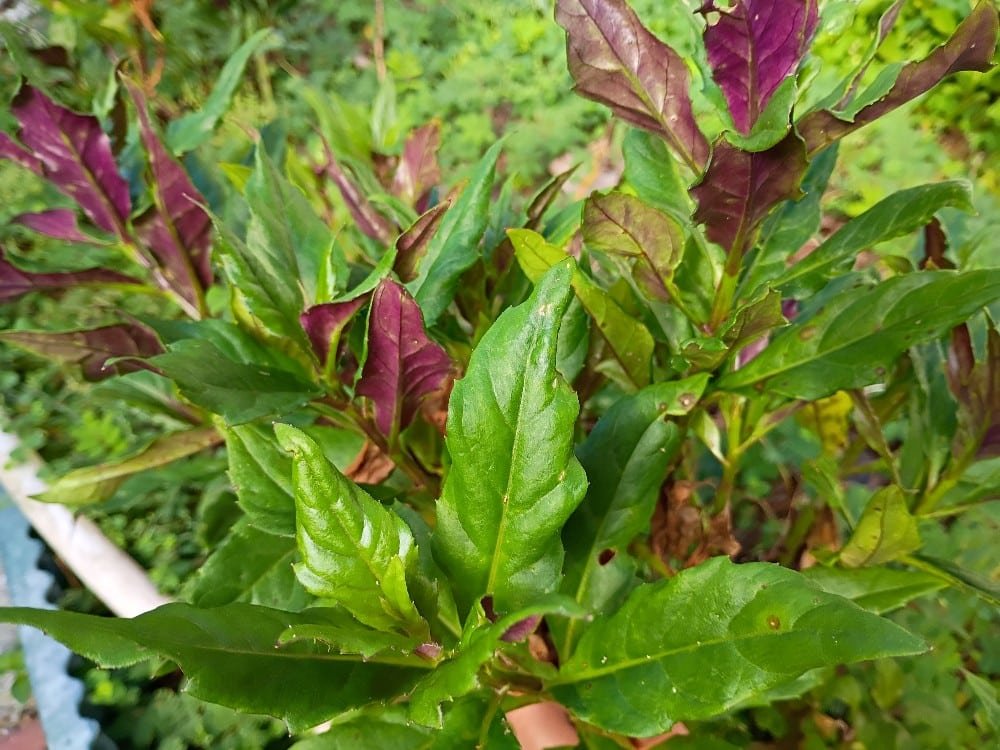
Roselle (Jamaican Sorrel)
This one is another type of Hibiscus plant, but with an added use and just as visually appealing. The Roselle, or Jamaican Sorrel, has ornate and beautiful calyxes, or flowers that, once finished blooming, turn into seed pods. These calyxes can be picked after the flower phase and steeped to make a delicious hibiscus, tart tea.
Or, otherwise, the leaves themselves are still edible and taste similar to the Cranberry Hibiscus. I actually prefer the Roselle leaves to the Cranberry because they have a better crisp texture for salads.
Roselle can grow very large or kept small depending on upkeep, and like the Cranberry Hibiscus, is another plant that comes back very easily every summer from seedling.
Sissoo (Brazilian Spinach)
I LOVE Sissoo Spinach, so much. I will try my best not to be biased here but there’s so much to rant and rave over Sissoo. Firstly, this crazy cute looking plant grows so unique compared to any other plant, and it’s leaves are crinkly curly – it’s tough to describe. I want to let a picture do it justice for you.
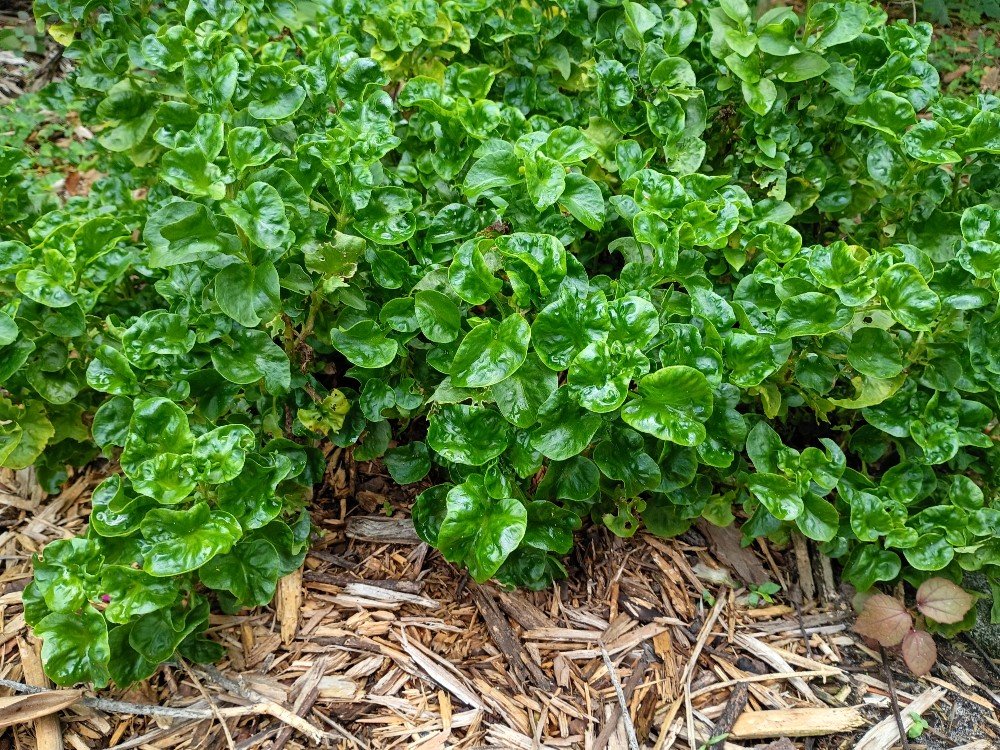
The taste is nothing extraordinary, but that honestly makes it perfect for salads since it has this unexpectedly crunch. You can also cook Sissoo down like any other spinach as well. I’ve used it in anything from soups, pesto, or just lightly sauteed with olive oil and salt and pepper.
I have multiple of these plants throughout my yard, and while Sissoo absolutely loves Florida heat and sun, my best plants overall were under canopy or dapple light where the plants were able to stay pretty dry more consistently.
Sissoo itself is pretty drought tolerant, so once established I forget about watering them. And the more you clip – the stems and leaves – the more this plant will grow. This one is another super easy propagatable plant from cutting.
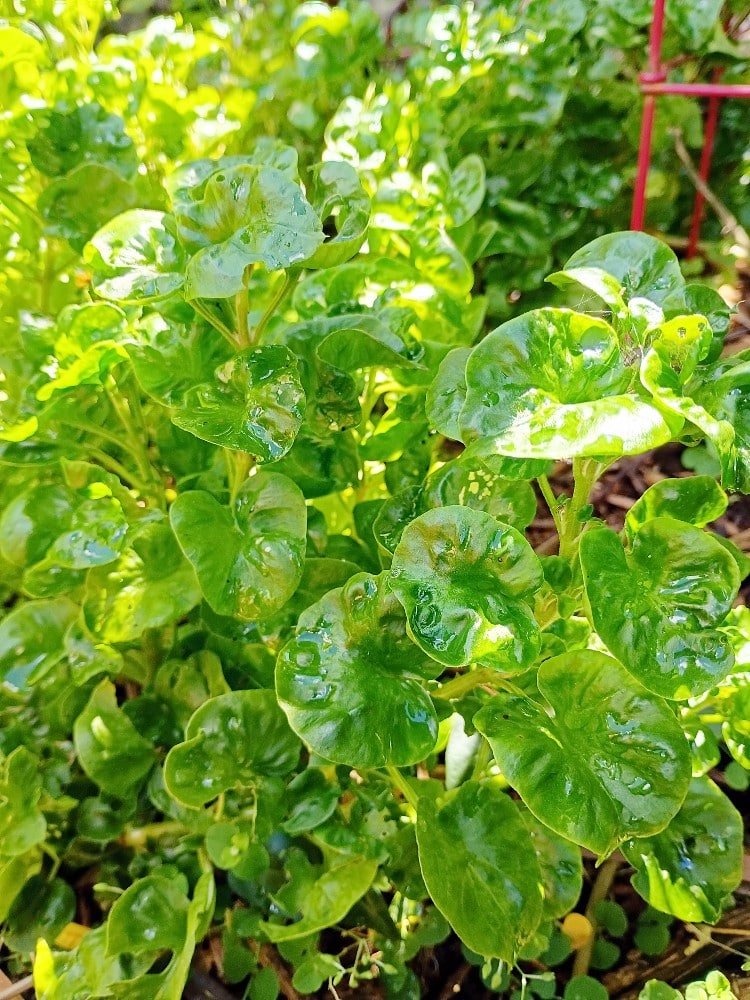
Katuk
This plant, shrub or tree (depending on how you allow it to grow) deserves some attention for its ornamental appearance. The leaves, flowers, and even seed pods of this plant are edible, and it has a rich, buttery and nutty flavor to go with it. Some say it resembles peas as well??
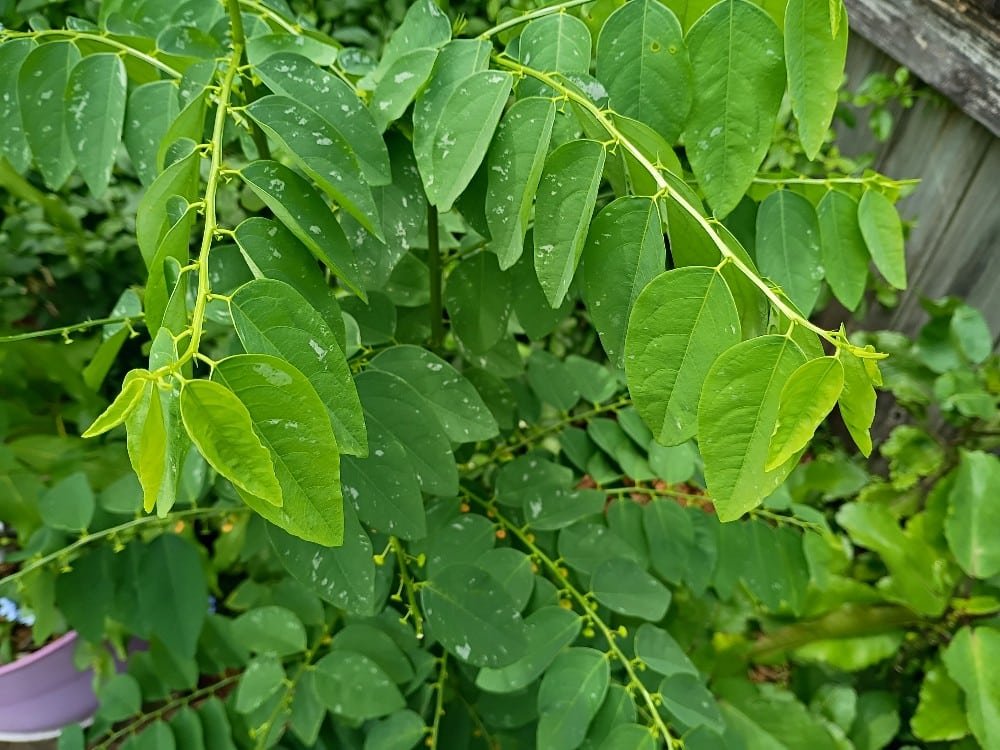
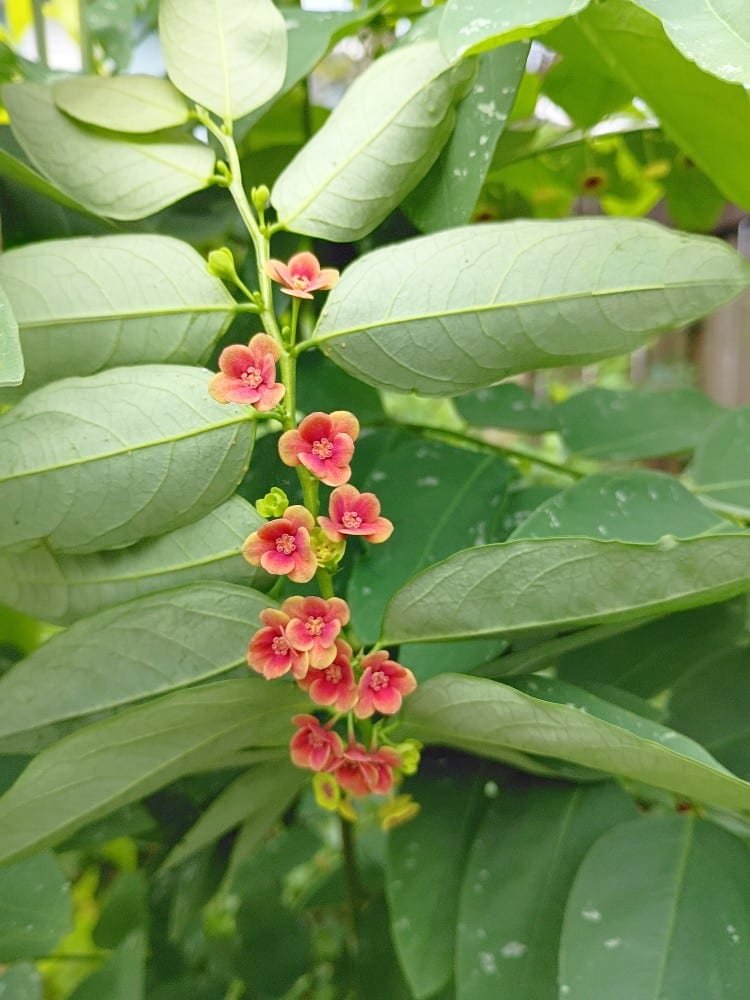
The only downfall is its slower growth rate, but even that’s not a reason to write off having this stunner in your garden. But that could be entirely climate and placement related, though my latest Katuk took off being planted in more dapple/afternoon sun.
Still, it’s another tropical native that thrives in heat, requires minimal attention and is merely drought tolerant once established. Cuttings are propagatable, yet not always as effective since they need a bit more TLC and time to root. All in all, Katuk is an underrated edible perennial to have in your yard, especially if you live in a warmer climate.
